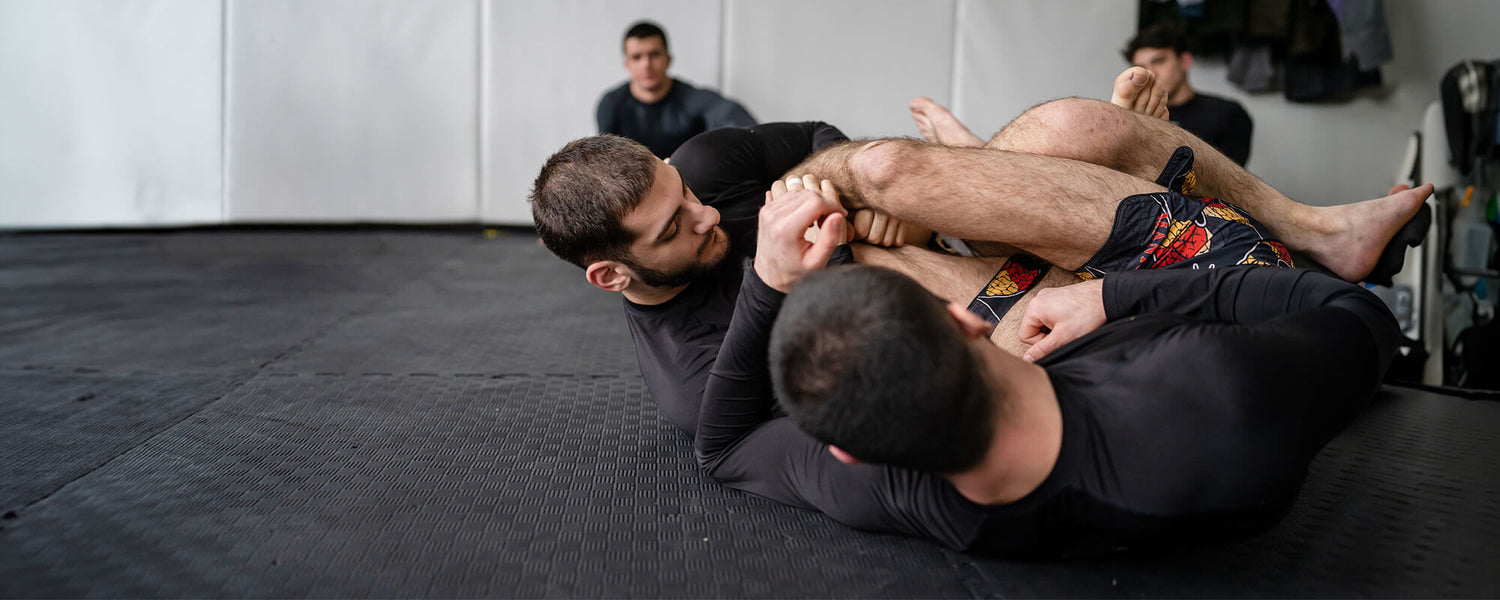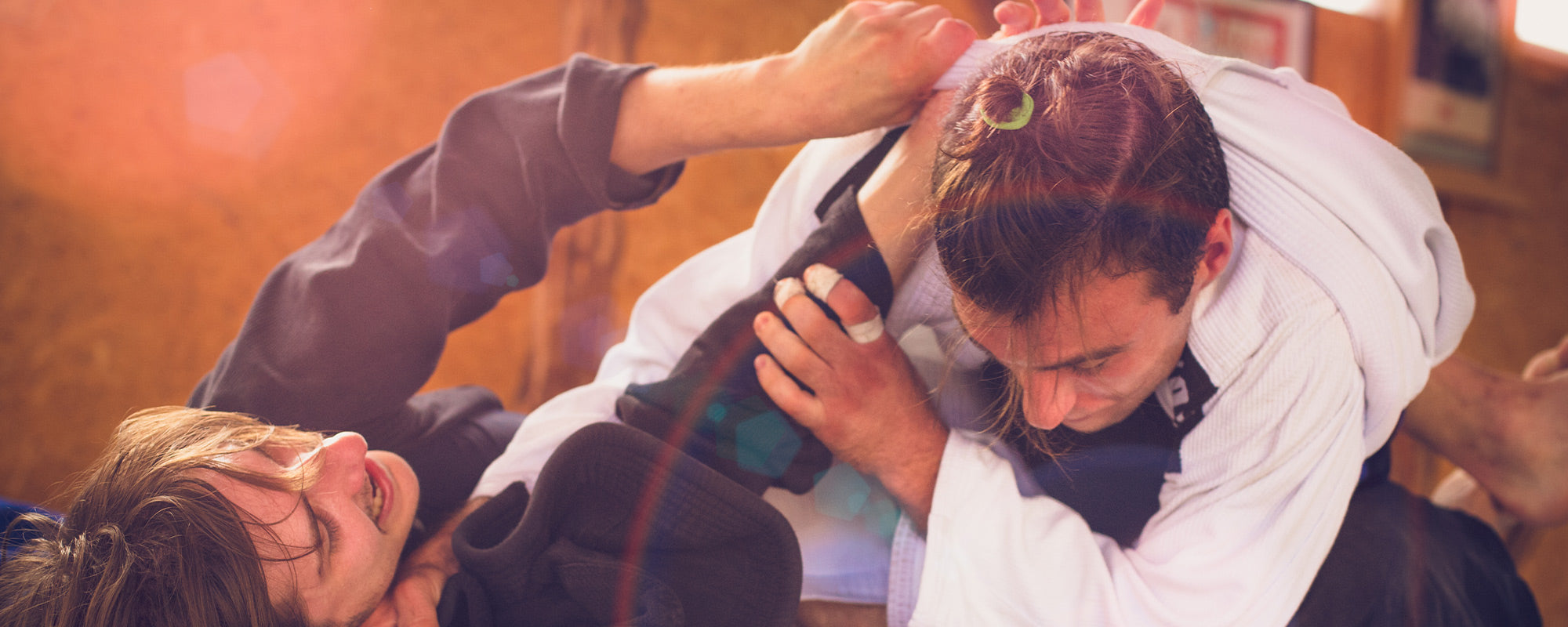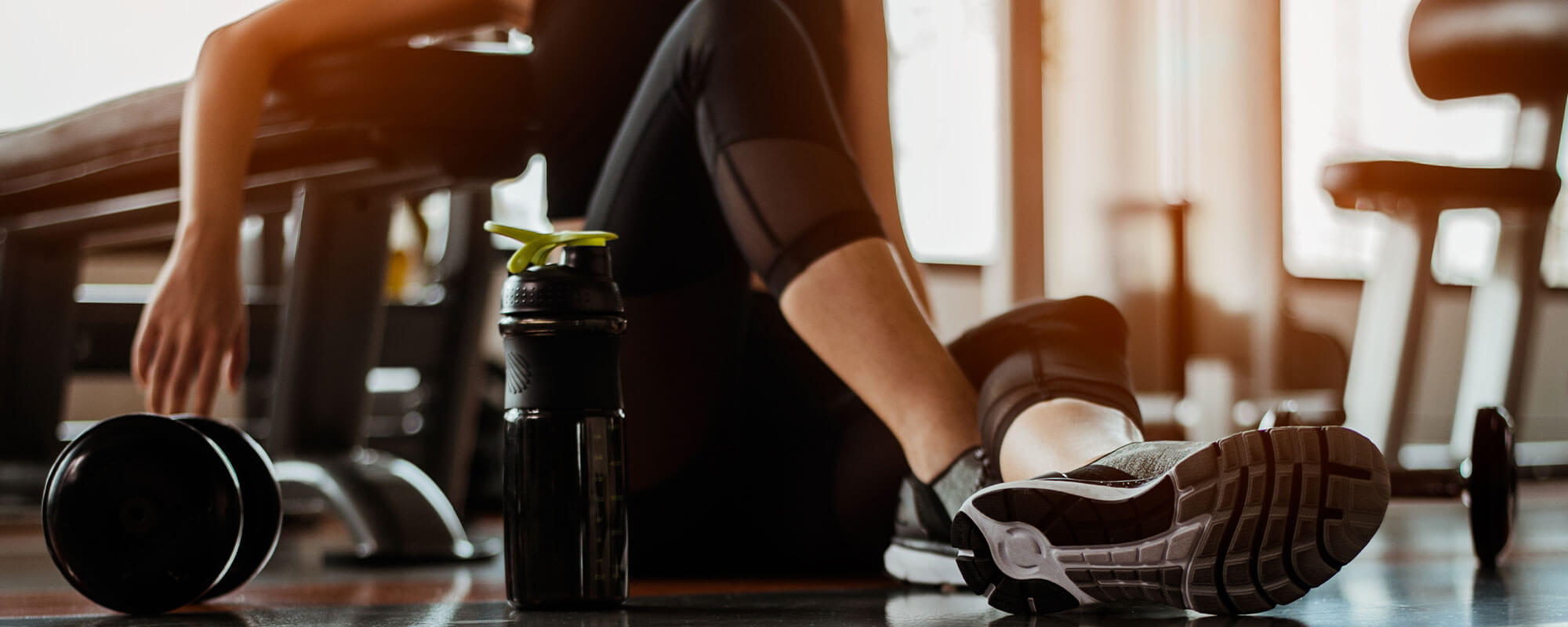Individuals with shorter legs can learn how to master a Brazilian Jiu-Jitsu triangle. This would be based on understanding mechanics, particularly changing, and mainly focusing on the emphasis of the technique and control needed to put a person in the correct position to submit to the triangle choke.
They should thus focus more on leverage, control, and technique, which enables them to eliminate all their assumed ideas of a body structure and hence be entirely available for submission holds. The triangle choke chokes for the smaller leggers make Brazilian Jiu-Jitsu a sport where all types of bodies have a place in the flow and can thrive through adaptability and skill.
Table of content
1. Introduction

A versatile combat sport that can be practice by all individuals regardless of your body, weight, and height, it supports individuals of every body type to learn various techniques and submissions even applying a triangle choke with short legs is possible in Jiu-Jitsu. It would all depend upon how one understood the mechanics of establishing the guard, making the necessary adjustments, and practicing.
One must learn to use strength, correctly position the opponent's body, and be a contortionist. Once one begins practicing and continues practicing, then one can master this triangle choke despite whatever length one's legs were and still are.
Determination and practice with a comprehensive understanding of what differences must be made will allow short-leggers to master the triangle choke technique and compete well in Brazilian Jiu-Jitsu.
1.1. Explanation of the BJJ Triangle Choke Technique
The triangle choke is a very effective submission in Brazilian Jiu-Jitsu, and if your legs are shorter, just a few little adjustments here and there, and you can still execute it flawlessly.
A triangle choke is one of the advancing submission techniques that involves encircling the head and arm of the opponent to compress his throat, rendering the opponent unable to bear the pressure and having him eventually tap out or pass out.
1.2. Emphasize the modification of techniques for BJJ players with short legs
Generally, practitioners of this art believe that they can find it more challenging to perform the said moves due to their short legs; however, the triangle choke can be, on the contrary, successfully conducted with a few transformations and techniques.
The triangle choke underlines the technique and practice of how to modify the way one carries out the method of applying choke when you have short legs.
1.3. BJJ Triangle Choke in the Arts of Combat
In a triangle choke, the legs trap the opponent's head and one arm, forming a triangular shape. The carotids that supply the brain with blood are compressed to make this choke work. With the blood flow cut off, it is possible to choke the opponent into submission in seconds.
The triangle choke forces the opponent to surrender or risk losing unconsciousness. The choke locks around the opponent's neck while the other retains the pinned arm and places both legs in a stable position to apply pressure.
2. Mechanics and suitable strategies for successful execution

2.1. Position of Onset
The closed guard is the most appropriate beginning position while attempting the triangle choke.
To achieve this position, one should lie on his heel backward and amass his legs around the waist of the opponent.
If your opponent is sitting in this straight posture, it helps initiate the triangle choke.
When closing the guard, you should squeeze hard and apply pressure where the hips are at or above the horizontal level.
This helps make it difficult for the opponent to form a posture or control you.
If an opponent attempts to posture up, you may use your opponent's weight against them by pulling them back down, which helps facilitate the next steps in drawing out the choke.
2.2. Making the Angle
To perform the triangle properly, an angle has to be made. Employ your feet for support against your opponent's hips and your body to one side.
The angle should be 45 degrees to the opponent's body so you can easily place the leg at the opponent's neck.
Use control against your opponent's posture as you shift your hips while pressing down on their neck or shoulder to support them in a bent position and prevent them from sitting back up.
With one of your hands, grab onto their wrist, then with the other one, press on their neck or shoulder.
This helps prevent them from sitting back up.
Controlling them not only helps to keep the angle intact but also prepares them to trap their arm.
Keeping the focus on this primary motion, one can get their legs to work for them, i.e., allowing for easy execution of the triangle choke irrespective of its size.
2.3. Controlling the Arm
With the hand over the opponent's side, grasp the opponent's wrist on the side you intend to trap. This is essential in ensuring that the opponent's arm falls into place and also assists in the position of his body.
Pull the suppressed arm toward your torso while pushing down on the opponent's neck with one hand.
This action must be quick and smooth to minimize their possible reactions.
While holding them in place with their wrist, control their shoulders or neck with your other hand to prevent their posture from rising.
Grip the arm that is being trapped and rotate it across the body. This action causes the triangle to choke opening and hinders the opponent's movement.
If the opponent counters your submission attempt or escapes if the arm control goes loose, it is vital to secure this grip to set up the submission.

2.4. Securing the Opponent's Arm and Positioning
After successfully gaining control over the opponent's arm, the following action should be to trap that arm.
Pull the arm towards you, lift the foot on the same side, and place it on the opponent's shoulder.
This motion creates a barrier that eases the subsequent stage of the choke.
Pull the opponent's arm across to the side as you do that, and keep your knees close to the opponent.
This positioning will make it difficult for the opponent to escape or alleviate the pressure from the choke.
Once you get the arm across your body and place your foot on the opponent's shoulder, swing your other leg to the opponent's neck and move to the final stage of the triangle choke.
2.5. Conducting the Triangle Choke
To properly apply the triangle choke to the opponent, you must trap their arm and kick your other leg around their neck.
Bring your leg around, ensure you also get your foot around the lookout leg and hook it behind the knee of the leg on their shoulder.
This completes the triangular structure that is required to execute the choke.
This step helps secure your opponent even if your legs are short, which is essential to prevent the opponent from attempting any escape.
Put your leg in a fixed position, and also, when doing so, keep your hips engaged, which improves your control and manipulation of the situation.
2.6. Locking the Triangle
Pull your knees together effectively to set the required pressure around your opponent's neck.
Pull your opponent's head between your two arms and drag it down towards your chest.
This move builds up the squeeze and pulls the triangle even closer.
Stretch your legs back in, bring your opponent forward, and sink your hands onto their head.
Push their trapped arm away to make the choke work, and you can finish the triangle choke as planned.
2.7. Modifications
In the case of short-legged practitioners, it is essential to make the proper modifications during the performance of the triangle choke. The problem is mainly the residence of the hips and how to position them about the rest of the body.
Position your body at such an angle that it opens the shoulders to find the choke and to keep it secure.
Pull the opponent toward you if the legs cannot extend properly. This can adjust the choke without only depending on leg length.
Add force by using your hands to either push your opponent's head down or trap the arm away from the body.
These changes will allow you to effectively apply the triangle choke and use the technique consistently, even if you have short legs.
2.8. Finishing of the Choke
To effectively conclude a triangle choke, you must perform two main movements: squeeze and lift.
Upon locking the triangle, pressing your knees together to create as much friction around your opponent's neck as possible.
Lift your hips slightly off the ground to increase the choke's effectiveness.
If your opponent's body starts to move away from you, do not change your angle but fix your hips in position and use your hands to push your head back in the choke.
Provided the right amount of pressure and control looms, you can finish the triangle choke and get the submission quickly.
3. BJJ Practitioner’s Opinion on a Triangle Choke with Short Legs

One of the most common submission techniques taught in Brazilian Jiu-Jitsu (BJJ), the triangle choke, can be exceptionally useful if performed correctly. Many well-known BJJ fighters have tackled this problem and shared their valuable strategies and methods for doing the triangle choke with any leg length.
3.1. Kron Gracie
The latest addition to Brazilian jiu-jitsu is Kron Gracie, who is well-known for being part of the rich history of the Gracie family. Kron is confident that performing a triangle choke is within reach of anyone's skills as long as they understand a few details of the mechanics.
Pulling your opponent's head down and turning your hips can form a triangle, even if your legs don't cover that much ground. Gracie puts much stress on hip rotation when performing the triangle choke.
Such movement of the hips facilitates the process of getting the required position to apply the choke, which makes it simple to complete the technique regardless of how long your legs are.
Application:
Initially, you may utilize the triangle mechanism
The player should also pay special attention to the opponent's center of gravity.
Use one hand to power drive their head into their chest while using the other hand to turn the butt in that direction.
This will reset you to the angle you need to achieve a successful triangle choke.
3.2. Marcelo Garcia
Marcelo Garcia is the fiercest competitor in BJJ and has extensive knowledge of many submissions, including the triangle. He possesses several variations that work well for those with shorter legs. Before trying the triangle choke, Marcelo knows that a strong head start on the guard is inescapable.
A great closed guard ensures that the opponent cannot posture up and set up a defense. He thinks fighting warriors with less-legged persons should first put all their body to the opponent to get hold. For instance, it is possible to pull a man down by holding onto his arm and pulling on his head to neutralize the effects of leg length and enable the coming of the triangle.
Application:
Starting from a closed guard, using a cross collar removes the opponent's balance. Use your hips to create an angle, then place your leg over the opponent's head.
Let us remember to engage our upper body to ensure we are controlling our opponent's posture.
3.3. Cesar Gracie
Cesar Gracie Gracie says one can pull the triangle choke much easier if he can break an opponent's posture. One cannot pull the triangle if the opponent's back is straight. Dragged down the opponent hard for the choke's application, or else it is impossible.
He elaborates that one must also use one's core to help keep the required shapes and pressures in the choking action. This is a good advantage for smaller practitioners since they know how to use their legs and hips to push better.
Application:
When the opponent is in front of you, try to pull his head down while pushing his trapped arm across your body.
This will make the triangle tight, which will help you to choke effectively.
3.4. Ryan Hall
Ryan Hall has a series of submissions and creative elements. His techniques are beneficial, especially for those who tried bad techniques that only highlight the triangle choke.
He is very accommodating in teaching how the triangle choke is executed and the different positions of the body and legs used. This enables most practitioners to understand how to employ their technique to their advantage and irksome with physical limitations.
Application:
Choke to a more open guard or change the grip to get the angle for attacking differently.
This flexibility would also help finish the choke with a lower leg-barring length.
3.5. Eddie Bravo
Eddie Bravo's typical training emphasis on the triangle choke towards practitioners has additional components well-suited for short-leg players.
Eddie mainly encourages the setting up of the triangle choke while in some crazy positions, whether on the back or standing. This can also include using rubber guards or flexible positions for better angles and leverage.
He stresses the need to be bent and moved about, facilitating tackling angles that might prove difficult, especially for shorter, less-legged practitioners. This increase in movement allows for
some fluidity in the setup and transitions.
Application:
Utilize dynamic guard positions to create opportunities for the triangle choke.
Experiment with different angles and grips to find what works best for you, particularly if you have shorter legs.
4. Conclusion

In conclusion, this triangle choke with shorter legs is brutal to master but possible by being adaptable, having specific adjustments, and practicing regularly. Once the mechanics are learned and changes needed are made, a technique and control focus allow even the holiest individuals to deliver a triangle choke submission properly.
It can be derived from the position where the onset is placed, making the angle, controlling the arm, securing the opponent's arm, and positioning clients who have shorter limbs, thus implying the flexibility of this technique.
Proper settings and positioning allow individuals with short legs to execute a triangle choke technique well. Practitioners can overcome any limitations of this hold if they emphasize leverage, control, and technique after mentioning leverage.
5. Frequently Asked Questions (FAQs)
Q: What would significant adjustments be for a triangle choke for shorter-legged people?
The main modifications involve getting the correct angle, taking control of the opponent's arm, and securing the position to apply the triangle choke effectively.
Q: Is triangle choke an effective submission technique in Brazilian Jiu-Jitsu?
Yes, triangle choke is a powerful submission technique that may leave the opponent unable to bear the pressure as he may submit or pass out.
Q: How important is practice for leg-growth people who must be able to master the triangle choke?
Indeed, practice is critical to persons with short legs as this would allow them to master techniques and develop flexibility to effectively apply the triangle choke in Brazilian Jiu-Jitsu.












Leave a comment
This site is protected by hCaptcha and the hCaptcha Privacy Policy and Terms of Service apply.